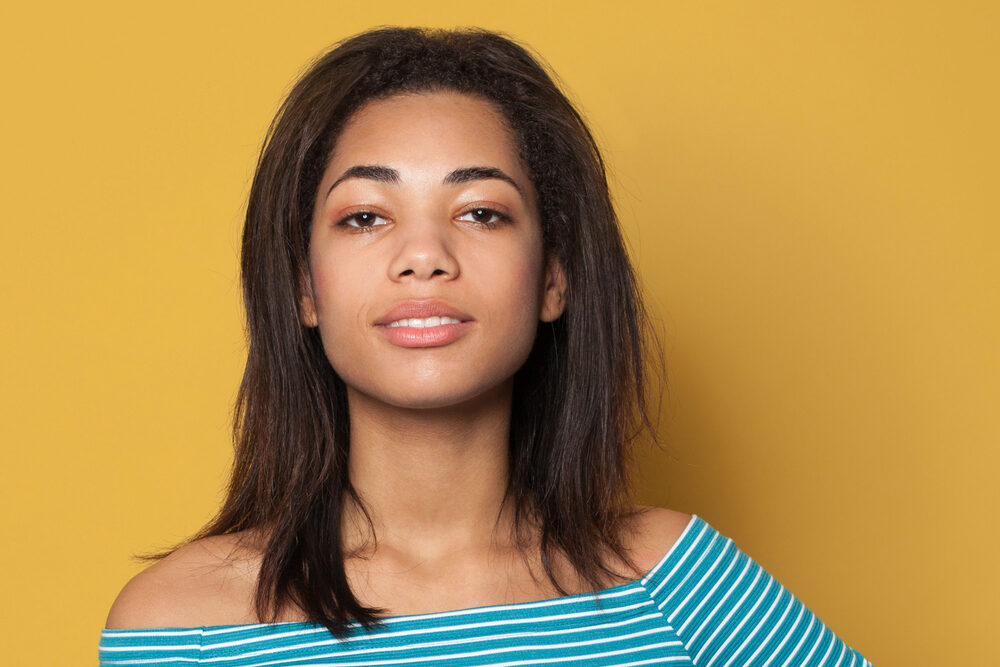
If you have a naturally curly mane, you’ve likely dealt with your hair being straighter in some areas than others. But why is it bone straight on top and curly underneath?
This article will explain why you may be experiencing this puzzling hair texture phenomenon and teach you how to resolve it. Let’s get right into it!
Table of Contents
Why Is My Hair Curly Underneath but Straight on Top?
Having curly hair underneath but straight on top can be caused by genetics. Environmental exposure, hair damage, styling techniques, and product overuse can also cause damage. The layers of your hair can be exposed to different amounts of damage.
For example, if heat isn't applied evenly, the lower layers may keep their natural curls. At the same, the top layers may become straighter. This uneven heat could lead to different amounts of damage throughout your hair. To make your hair look more consistent, you can use the same hair care routine for all layers. We also recommend using nourishing products like deep conditioners and reducing heat styling.
So, there are several reasons why your hair may be curly underneath and straight on top, and some of them may be surprising to you. However, genetics and hair damage are the two most common reasons. In this section, we will explain some of the most common causes of uneven hair textures.
Key Takeaways
- Genetic Influence & Damage Factors. The difference in hair textures can be attributed to genetics and the shape of the hair follicle. Furthermore, damage can be caused by heat-styling tools, weather, and chemical treatments. Damage from mechanical stress like over-brushing and combing is also a factor.
- Haircare Practices. Protecting hair, especially the top layer of hair, from damage is crucial. Use hair products that preserve natural oils. Avoid excessive heat and minimize harsh chemicals that can disrupt the natural curl pattern.
- Nighttime Hair Protection. Covering your hair while sleeping helps protect your natural curl pattern. Your hair will be less frizzy, allowing the top and lower layers to stay more uniform.
- Styling Adjustments for Even Textures. Try Curly Girl-approved styles and products to unify different hair textures. Consider haircuts like a Pixie cut for root lifters. You can also use deep conditioners to nourish your hair follicles.
- Customized Haircare Routine. Consistent, tailored haircare routines are vital for managing different hair textures. Your routine should include regular trims, conditioning, and trims.
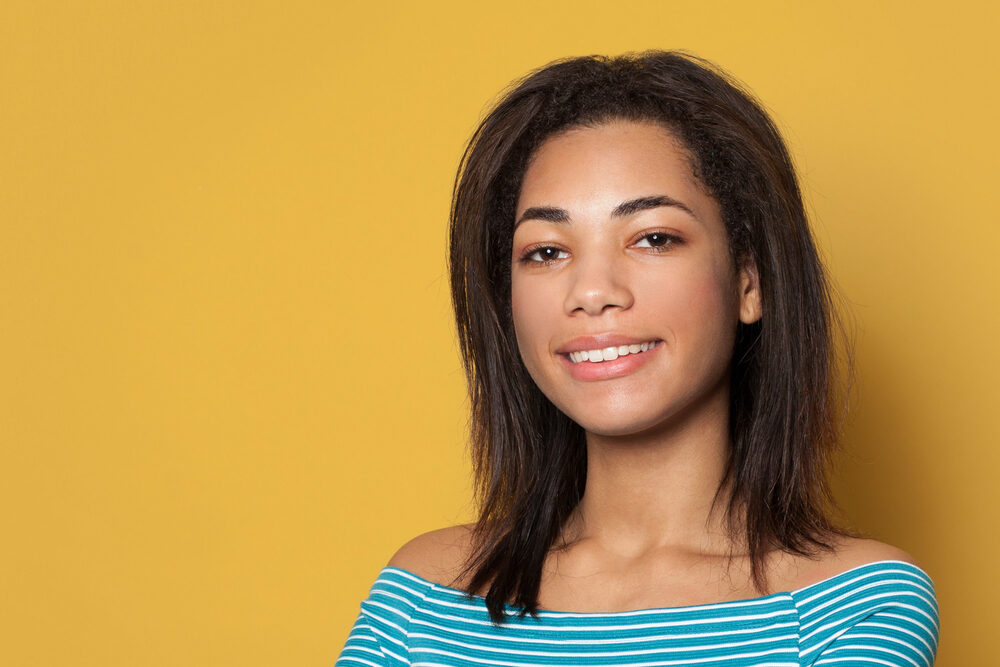
Genetics Is To Blame
The texture of your hair is ultimately determined by inherited genes. Genes from both parents interact with each other to produce your unique hair texture. So, if you have parents with a mix of curly and straight hair, then it’s no surprise that your hair is similar.
Also, if you’ve done any research on this issue, you may have seen videos and read blogs about multiple textures. Some are born with super tight curls in their crown and wavy hair at the back or waves at the top and kinks on the sides. These variations are natural and normal, but they can make styling difficult.
Your Hair Is Damaged
Various conditions and activities cause texture-altering damage to the hair. Review the section below to identify specific causes of hair damage that result in varying textures.
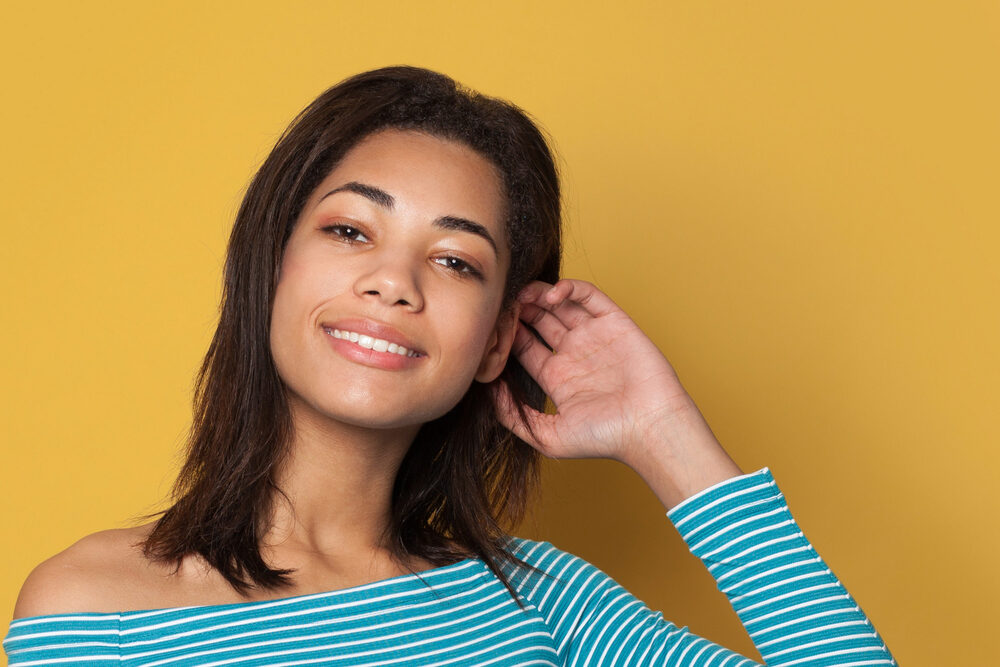
Overuse of Heat Styling Tools
Heat styling tools (e.g., curling iron, flat iron, etc.) are useful for temporarily altering the texture of your hair. They can easily make flat hair voluminous or very curly hair bone straight.
But overusing them damages the hair's protective layers, causing strands to deviate from their natural texture. Furthermore, when the average person uses heat tools, they usually spend more time straightening the top layer of the hair to ensure it looks perfect.
This literally fries the hair's outer layers, leaving strands dry and resistant to products that encourage curl formation.
Weather
Prolonged exposure to extremely hot or cold weather takes a significant toll on the health and integrity of your delicate strands. UV damage from the sun‘s rays scorches the hair, altering its texture.
Cold weather can dry out your strands, making them more resistant to styling. And since the top layer of the hair is generally more exposed to the elements than the layers underneath, it takes the brunt of weather-related damage.
Overuse of Chemical Treatments
Frequently treating the hair with products such as dyes, bleaches, and color creams inevitably damage its outer layer. Many people run into this problem when they do multiple coloring sessions to touch up the tone of their hair.
During these sessions, the top layer of the hair gets the most attention because it is the most visible. As a result, this layer suffers the most damage, leaving your hair texture uneven.
Over Brushing or Over Combing
Brushes and combs efficiently detangle hair for effortless styling. But it is easy to get carried away when using these tools.
Some people tend to overmanipulate the outer layer of the hair with a comb or brush several times throughout the day, even after it has been completely detangled.
Over time, this practice can cause extensive damage to the hair cuticles, especially on the top layer of your hair. While brushing won’t make your hair straight, it can damage it to the point where your curl pattern no longer looks the same in a certain area.
Leaving Hair Uncovered While Sleeping
Neglecting to protect your hair at night quickly ruins the volume and definition of your curls. Because the top layer of your hair is directly exposed during sleep, it’s more likely to lose its curl definition. That’s why your hair may be all one texture before you go to bed and straight on top when you wake up.
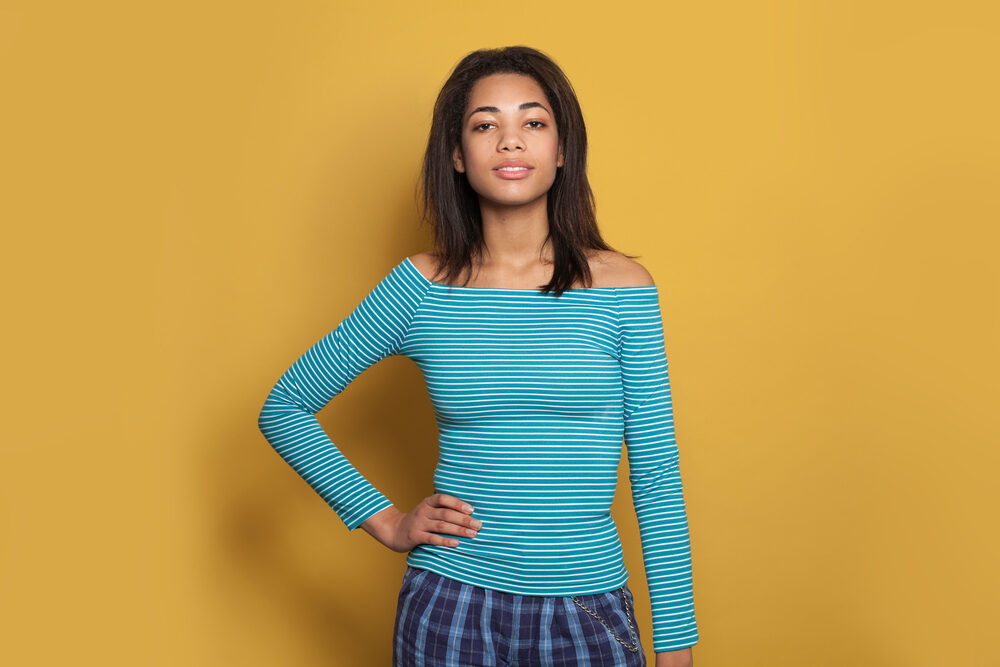
Uneven Hair Lengths
In some cases, hair can be different lengths on some areas of the head. The longer hair strands are, the heavier they become. It is more difficult for longer strands to retain the naturally curly texture of shorter strands due to the extra weight.
For this reason, those with hair that is longer at the crown often notice a more relaxed texture at the top of their head.
How to Even Out Your Hair Textures
If you’ve been struggling with multiple hair textures, don’t worry. There are practical solutions you can implement to take control of your hair‘s texture. Read on!
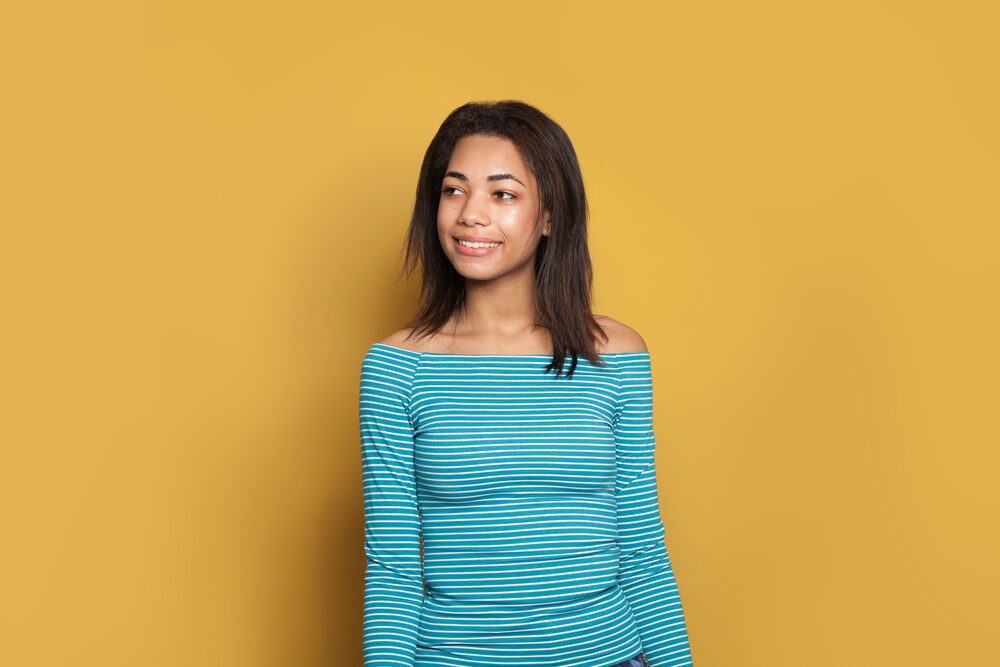
Go Shorter at the Crown
Grab your hair-cutting shears! If the hair at the top of your head is not completely straight but seems to fall flat, a haircut may be all you need.
Trimming a couple of inches off of your straightest, flattest hair section will reduce its weight. As the overall length of the section decreases, the more your strands will draw up, making your curls tighter and more defined.
If you’re hesitant about cutting your hair due to fear of losing length, you can gradually trim an inch or two off your ends every few months.
Over time, the texture at the top of your head should conform to the layers underneath. Plus, you will eliminate split ends that inhibit curl retention.
Try Curl Friendly Styles
Styles such as roller sets, braid-outs, and twist-outs are excellent options for people dealing with multiple hair textures. These styles force the hair into a uniform texture, eliminating stubborn straight areas on the top of the head.
Moreover, the versatility of these styles is limitless, allowing you to adjust the length and tightness of your curls as you please. You can also experiment with curl-friendly styles on wet or dry hair for different looks.

Implement a Healthy Hair Care Routine
Implementing a healthy hair care routine will revive your curls in no time. To maintain healthy, evenly textured hair, you should consistently cleanse, condition, moisturize, and trim your hair.
Depending on the texture of your hair, the frequency at which you complete these healthy hair care steps will vary. However, finding the schedule and routine that works best for your hair will make all the difference in its texture.
Note: If you believe that the straight portion of your hair may be covered in build-up, start with a clarifying shampoo session.
Here are some other options to try if the above remedies don’t work:
- Relax hair. Chemical relaxers break down the texture-creating proteins in hair strands, making them straight within minutes. These products are best for those with coarse, kinky hair. Although relaxers effectively change the texture of the hair, they have to be repeated to maintain the new pattern. Furthermore, these products can be damaging, so you should always use them in moderation.
- Perm hair. Perms do the exact opposite of relaxers. They break down and rebuild the structure of the hair to create curls. If you’ve had it with your straight hair at the top, you can perm that section to add curls to match the bottom layer of your hair. You should only use perms occasionally to avoid totally destroying your hair texture.
- Straighten hair. Heat styling can even out hair textures when used in moderation. Heat styling tools such as blow dryers and flat irons are perfect for straightening coily, curly strands. And curling wands can give your curls a bit more oomph. Just be sure to use the tools on the lowest heat setting needed to achieve your desired look. Additionally, you should use them no more than once per week to avoid damaging your hair.
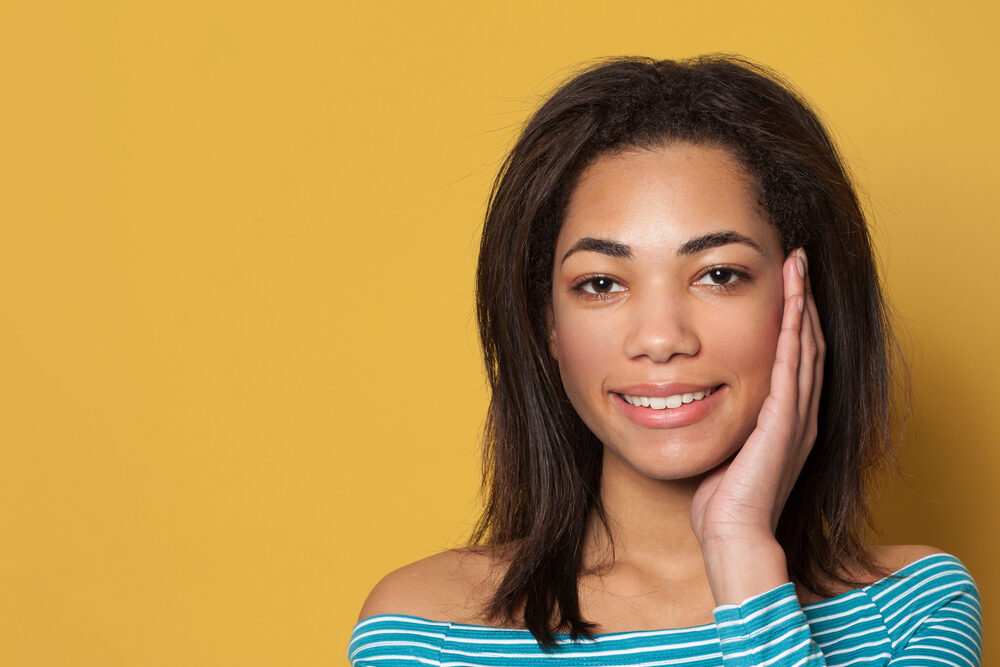
- How To Keep Hair From Sticking up on Top of Head
- How To Keep Natural Hair Straight in Humid Weather
- How To Fix Hair Webbing
- Why Is My Hair Matting Underneath
To sum things up, having inconsistent hair textures is an everyday problem in the natural hair community. But it can be resolved through one or more of the methods mentioned in this article. We hope this article provided you with the answers you needed, and we wish you the best with your hair!




